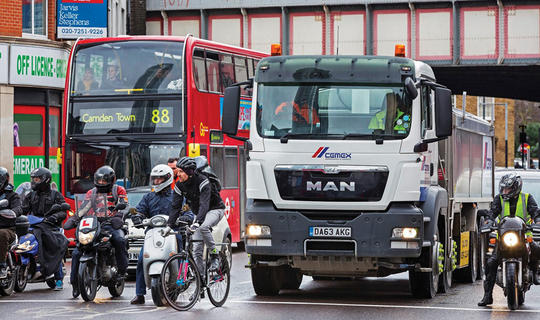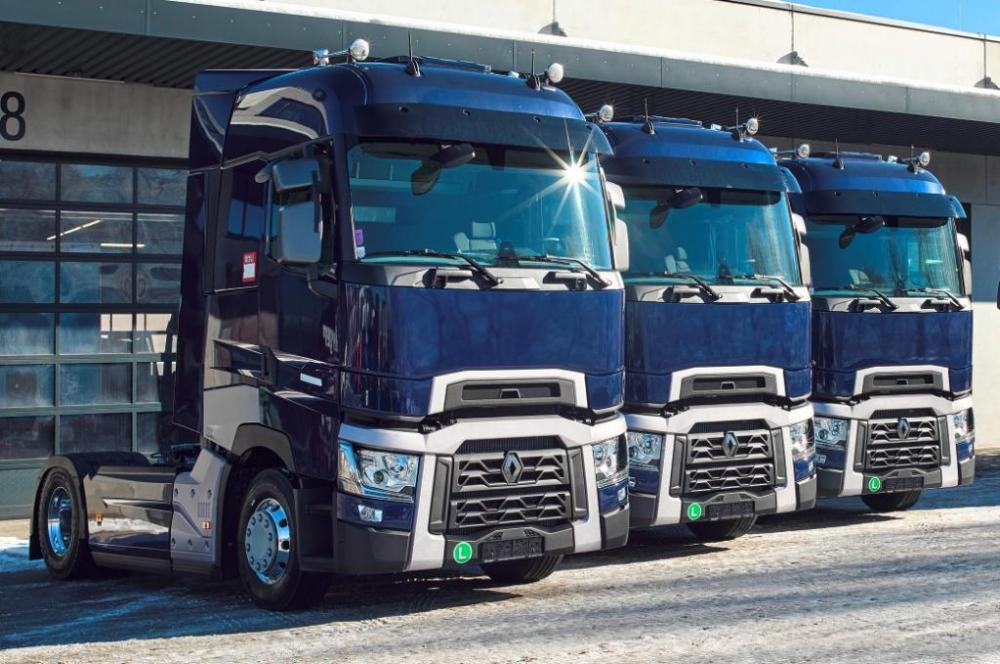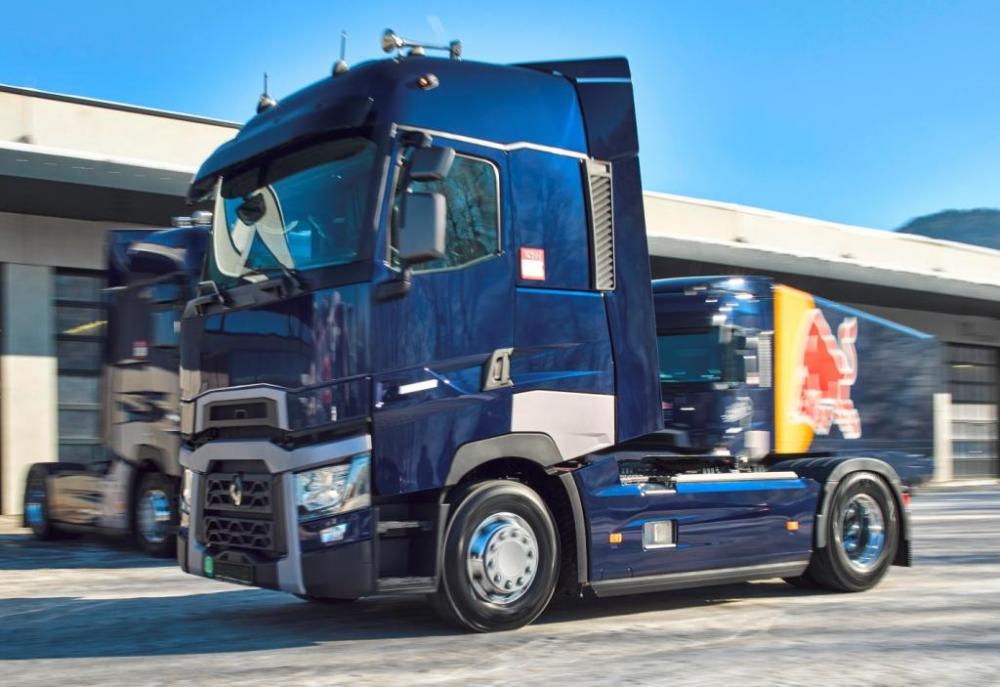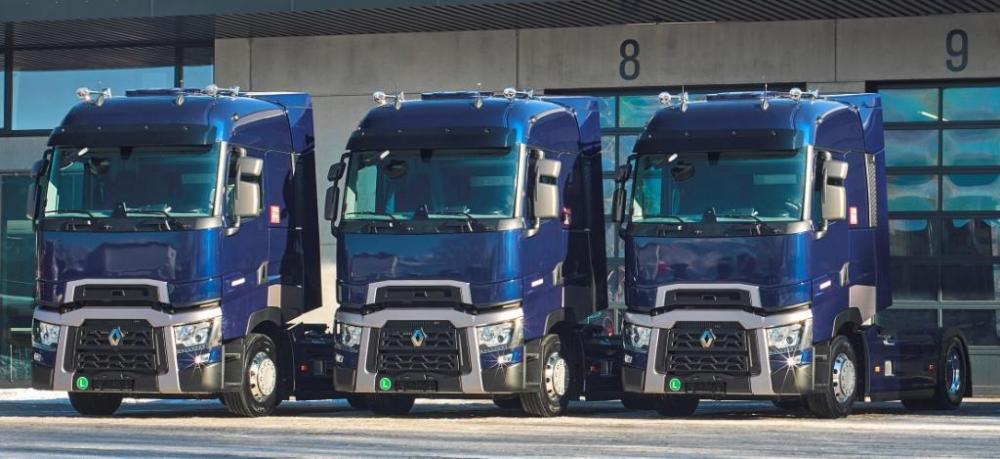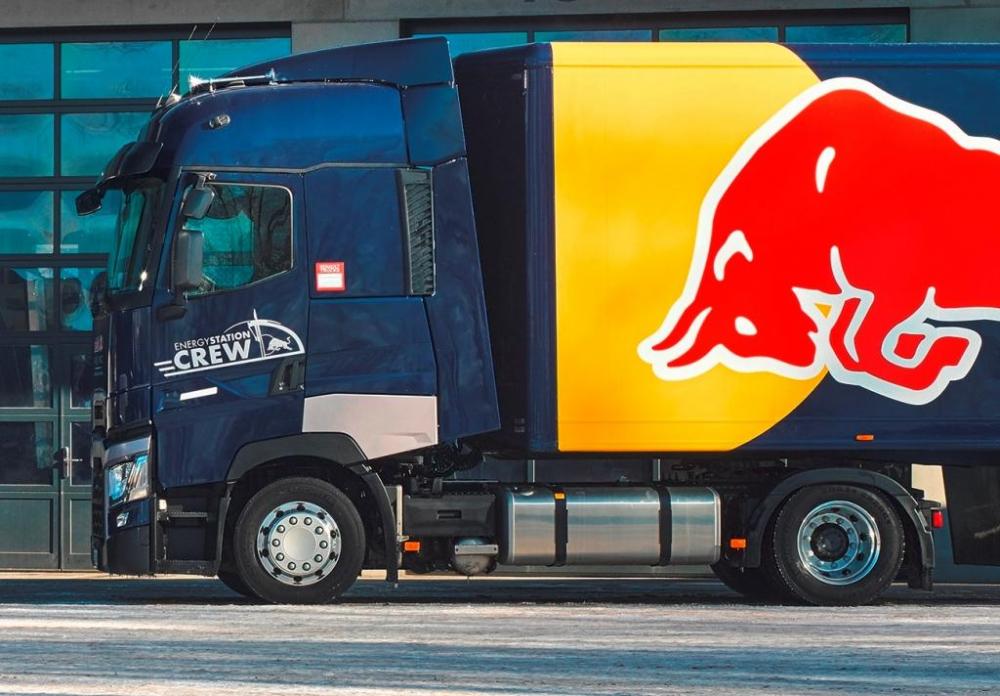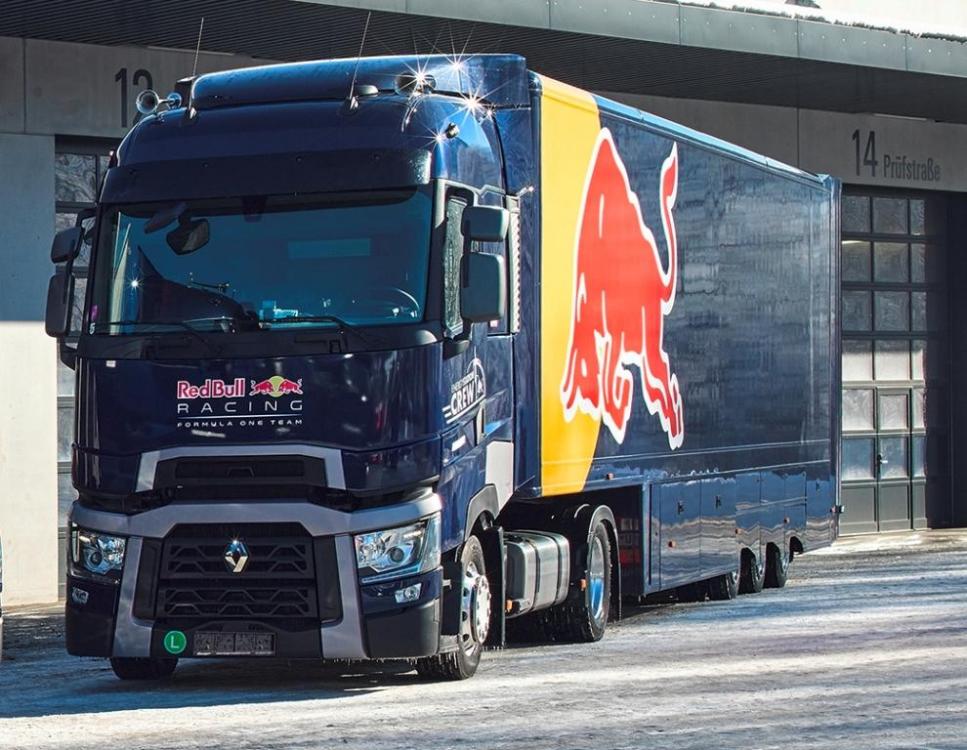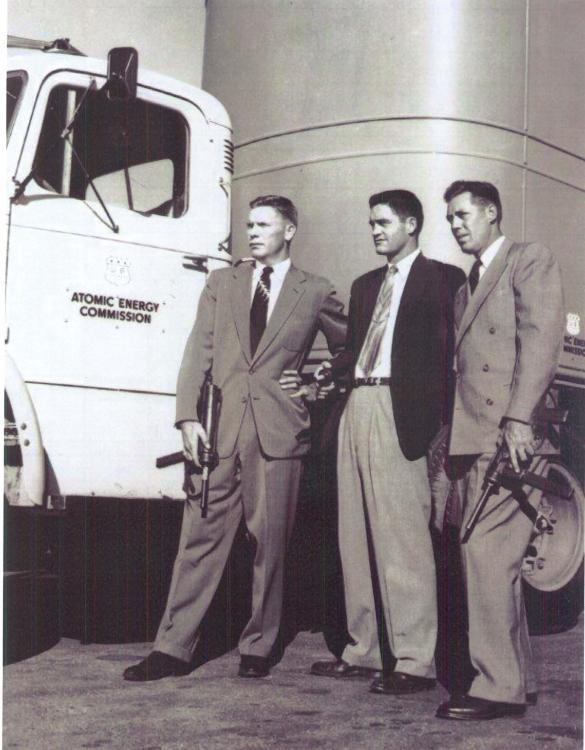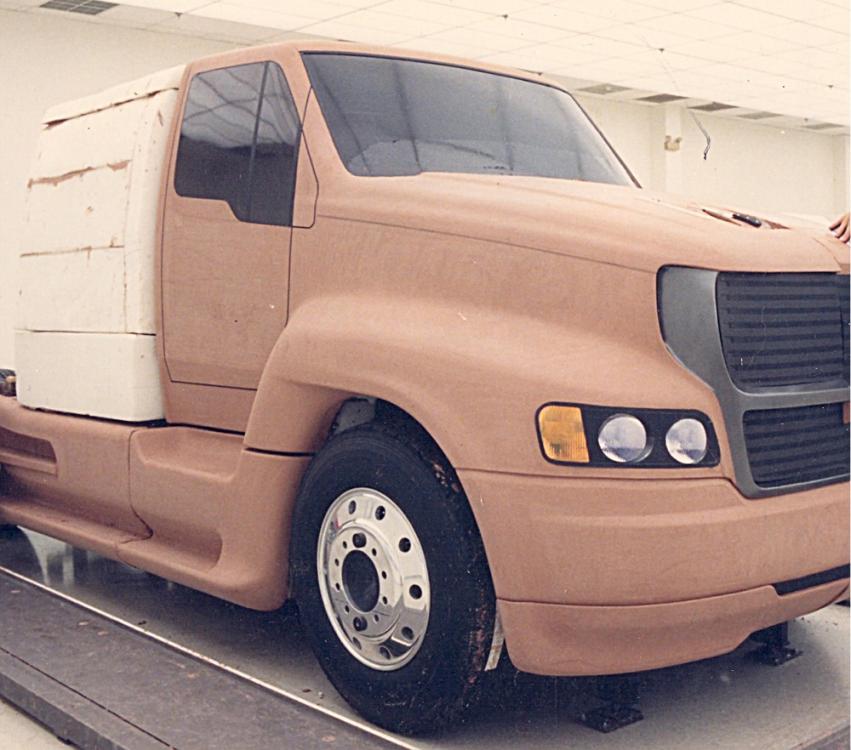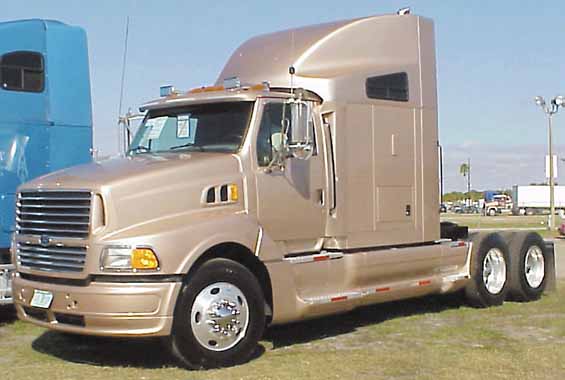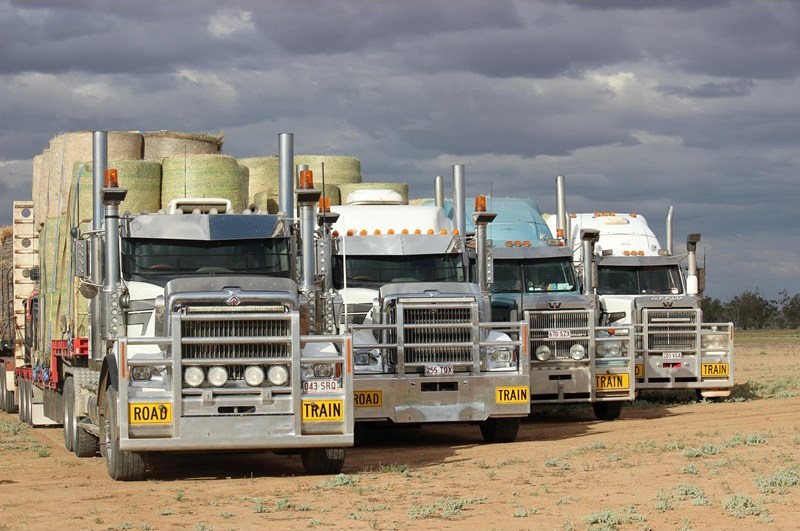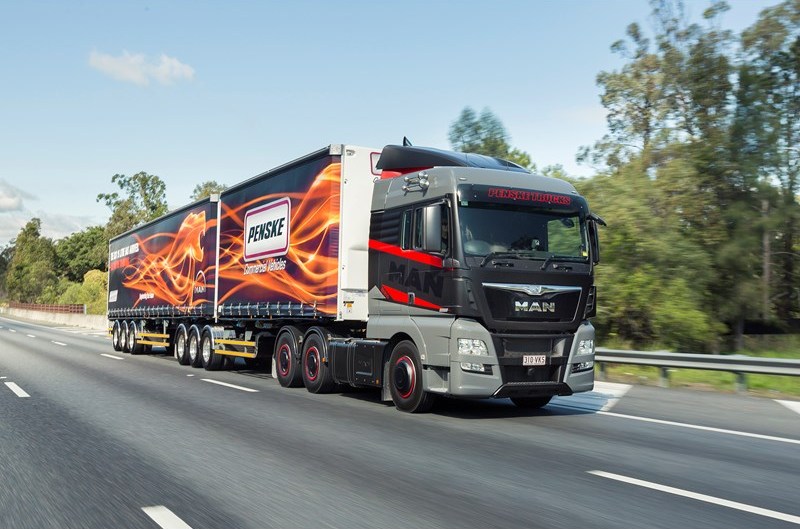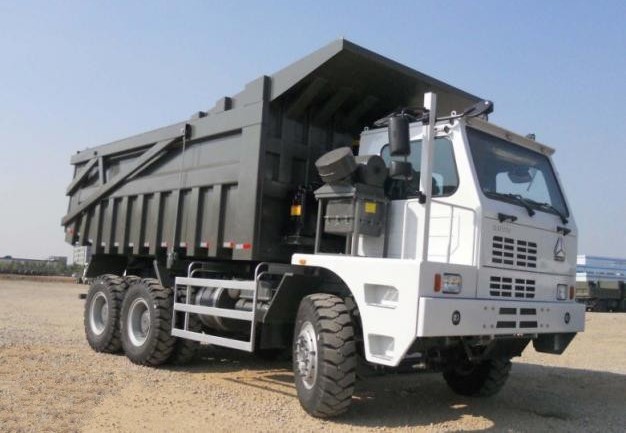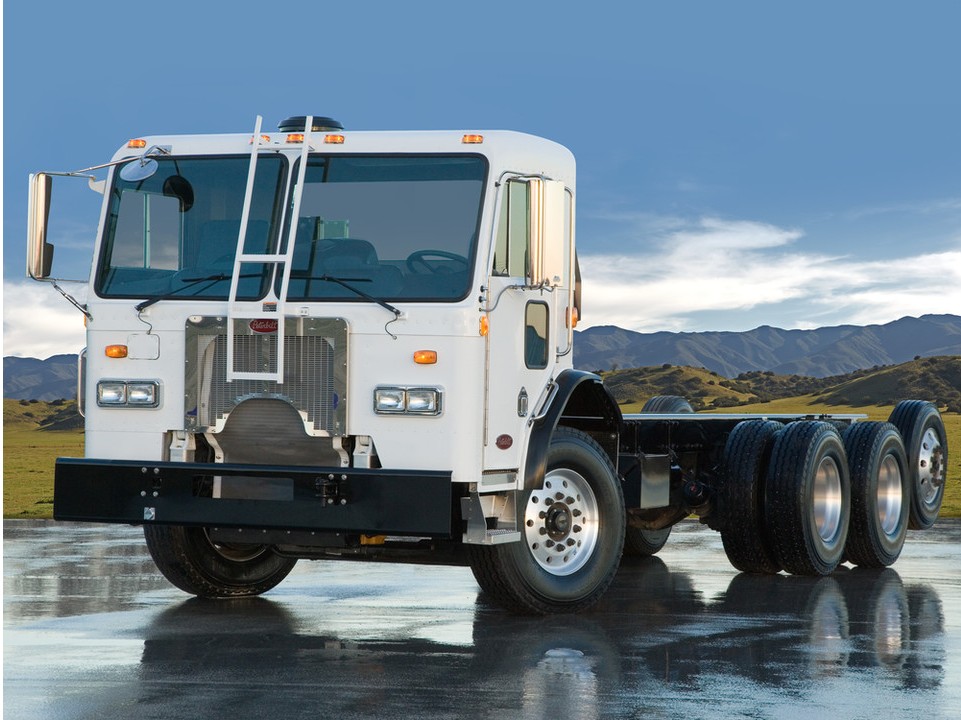
kscarbel2
Moderator-
Posts
18,935 -
Joined
-
Days Won
114
Content Type
Profiles
Forums
Gallery
Events
Blogs
BMT Wiki
Collections
Store
Everything posted by kscarbel2
-
Ford Offers CK-4 Alternative Oil for Super Duty Diesels
kscarbel2 replied to kscarbel2's topic in Trucking News
Billy, the weight of the oil is a factor, to some extent (new additives now allow 0W-20). But the additives used in a diesel engine-applicable oil are far harsher than those of a gasoline engine-specific oil. Those extra cleansing additives in 15W40 for the diesel requirement will reduce the life of a gasoline engine, such as your Isuzu. Without disassembling the engine, you can't ascertain the signs of wear. Lindsay Drydene (Drydene Oil) told me so before they sold out to Castrol, speaking of their 15W40 diesel product (Dieselall) aimed at companies who wanted one product for all. As for the Corolla, $34 in material cost (oil and filter) to change the oil every 5,000 miles is low cost transportation. I change my 0W20 oil every 5,000 kilometers (3,107 miles). -
If you like the car...........just keep it. Don't allow them to "fix" it. You're not required to do so. Your performance and fuel economy would likely decrease. If you want a change, GM has the diesel Cruze and a 2018 diesel Traverse is coming, and Mazda will offer a diesel CX5 SUV.
-
Commercial Motor / March 21, 2017 The RHA has labelled the Direct Vision Standard “a fiasco” after it said TfL had predicted half of the HGVs operating in London would be banned from the city by 2024. The association attended a meeting with TfL today (17 March) in which it said the transport body estimated that of the 188,000 HGVs operating in the capital, 35,000 would be banned from London by 2020, rising to 94,000 by 2024. The standard, first announced last September, will assign HGVs star ratings based on in-cab visibility. Only those with the highest rating will be allowed to enter London when the proposed legislation takes full effect in 2024. RHA chief executive Richard Burnett said: “This is a fiasco - it is shocking attack on business in the capital. “The cost of this will be met initially by road hauliers, but will eventually be picked up by the people of London. “Businesses and people depend on lorries to deliver the goods they need, including the food we eat. “It seems TfL is determined to undermine the competitiveness of London. The timings and requirements that are being specified are ridiculous.” Burnett added that with restrictions on vehicle emissions also to contend with, TfL’s standards are “impossible” for operators to comply with. “It’s impossible for a haulier to buy a vehicle now that complies with TfL standards as no vehicle has been assessed against any standard,” he said. “It is absurd to expect businesses to invest many tens of thousands of pounds in new, clean Euro-6 vehicles only to have them banned by TfL in a little over two years' time. "Of course we understand the need to make the roads as safe as possible, but this proposal has run off the rails. It is simply not credible.” TfL queried the RHA's figures from the meeting, but did not respond to requests for further information. .
-
Renault Trucks Press Release / March 21, 2017 The Red Bull International Motorsports team continues its collaboration with Renault Trucks and has just taken over three additional Renault Trucks T 520s. These vehicles, which bring the total number of Renault Trucks T in the team to 12, will help Red Bull transport its infrastructure. Three Renault Trucks T 520 Highs have been delivered to the Austrian Red Bull Racing Formula One team. With this new delivery, Renault Trucks maintains its pole position in the team’s fleet, which now has twelve T 520s. Seven of these trucks are an integral part of Red Bull Racing’s logistics network and travel across Europe from one F1 Grand Prix to another. They carry the containers that hold the entire Red Bull Tree House, the extended pit stop garage for the Formula One team. Out of a total of seven containers, four serve as mobile workshops. Apart from the conventional tools, a 3D printer is also available, ready to instantly print the required parts. The remaining three containers are used as mobile offices and can accommodate 35 people. As for the other five Renault Trucks T 520 Highs in the team’s fleet, they travel throughout Europe for the Red Bull MotoGP Rookies Cup, a race series specially created for young talent aged between 13 and 17, which last year celebrated its tenth anniversary. .
-
- 1
-

-
Volvo Trucks Press Release / March 21, 2017 Welcome to a new in-cab experience. Volvo Trucks system for services and infotainment combines easier navigation and more efficient fleet management with quality audio entertainment. Easier and more efficient assignment handling is made possible by integrating navigation and Dynafleet OnBoard. The driver can receive messages with GPS coordinates and communicate instantly via one point of contact. The easy-to-use 7” touch screen display can be controlled via touch screen, voice command and steering wheel buttons. This enhances both comfort and safety. A world of audio entertainment is at the driver’s fingertips. Local radio stations can be accessed from anywhere in the world, while favorite songs can be enjoyed in top quality audio, with access to several third-party streaming services. Take a look at how you can increase your productivity, efficiency and in-cab enjoyment. .
-
. .
-
Peterbilt 520, 320 eligible for hybrid, zero-emission voucher Fleet Owner / March 21, 2017 The Peterbilt Models 520 and 320 equipped with the Cummins ISL-G Near Zero engine have been granted eligibility for the California Air Resources Board (CARB) Hybrid and Zero-Emission Truck and Bus Voucher Incentive Project (HVIP). HVIP encourages the commercialization of low-emitting hybrid and zero-emissions trucks by assisting fleets with purchase of these advanced technology vehicles. Peterbilt introduced the Cummins Westport ISL-G Near Zero NOx emissions natural gas engine in the Models 520 and 320 in 2016. According to the company, the enginee offers 320 horsepower and 1,000 lb-ft torque. The engine is designed to operate on 100% natural gas in compressed (CNG), liquefied (LNG), or renewable natural gas (RNG) form and is ideal for vocational, refuse and linehaul applications, the company noted. “Peterbilt is a leader in environmentally-friendly solutions for the industry,” said Robert Woodall, Peterbilt assistant general manager of sales and marketing. “Eligibility for the HVIP voucher will allow customers participating in the program to benefit from the advanced technology and rugged durability of the Models 520 and 320.” The 2018 Models 520 and 320 will be eligible for HVIP when spec’d with the Cummins ISL-G Near Zero engine with a GVWR of 33,000 – 80,000 lbs. Registered dealers will receive vouchers for qualifying customer purchases.
-
Kevin Jones, Fleet Owner / March 21, 2017 The Worst Trucker in the World is back, bigger and badder than ever—because the latest recipient of the dishonor is a fleet run by the U.S. government. And, despite management issues that would warrant an FMCSA intervention, the fleet is still rolling. Indeed, business is booming, so to speak. But what follows is what we in the journalism racket call a “buried lede,” which means—aside from the fact we can’t spell—that the most important part of the story isn’t at the top, where it should be. Instead, it’s kind of like all those chain emails I get from my retired father, with the punch line/moral lesson/epiphany at the end. But, like a good chain email, the story is actually interesting as the suspense builds—so read on. Although I suppose the archival photo below offers a hint. But first, today’s vocabulary word: “Schadenfreude.” It’s an appropriately unattractive word for the pleasure one takes from the misfortune of others. Still, truckers should be forgiven for smirking when they learn that bureaucrats can't run a small, specialized trucking operation. Apparently, based on an extensive investigative report by the Los Angeles Times (difficult to read on their frustrating website because of the pop-up ads), a $237 million dollar annual budget isn’t enough to update the equipment of the 42-truck fleet, or prevent turnover. So far, sounds like a lot of small fleets—except for that taxpayer-funded budget part. And instead of Compliance, Safety, Accountability program problems, the operation of the Office of Secure Transportation (OST) has a history of “irregularities in the human reliability program.” This even though OST boasts a selection process that is “rigorous” for this “vital position,” and fewer than 2% of all applicants complete their “arduous 21-week training cycle.” Still, OST reports no fatal accidents or hazardous cargo spills in its 40-year history—but since it’s, um, kind of “secretive” and I couldn’t find their SMS data, I cannot confirm the claim. But there is the LA Times report of troubling practices and events, backed up by public records, nonetheless. Notably: An outdated fleet, “antiquated even by commercial standards” A third of the workforce's putting in more than 900 hours of overtime to make up for personnel shortages Cancelation of training classes because of funding shortages A site manager’s threatening to kill an employee in an altercation, but no disciplinary action taken; and, to top them all An extremely high incidence of alcohol-related events, including the OST’s top executive being arrested for drunk driving. And talk about “organizational culture,” much of the LA Times report isn’t new. The DOE’s Office of Inspector General was called in to review allegations of boozing and misconduct in 2010, and the OIG’s findings got a lot of press. OST experienced 16 alcohol-related incidents from 2007 through 2009, from a total population of fewer than 600 of those “highly trained” couriers. Of the "greatest concern,” according to OIG, were two incidents that occurred during secure transportation missions while the couriers were in “Rest Overnight Status,” a period during extended runs where couriers check into local area hotels. In 2007, a courier was arrested for public intoxication; in 2009, two couriers were handcuffed and temporarily detained by police officers after an incident at a local bar. “This has a classic footprint of an antiquated and inefficient supply chain management system that was created at a time of national emergency,” Nick Vyas, an industrial logistics expert at USC, told the LA Times. “If this were a private operation, it would be out of business in less than 90 days. No person in their right mind would subscribe to a service like this.” Ready for it? OST hauls nuclear warheads, among its lethal loads. But, if you’ll read the full story, the operation is very complicated and very serious. The agency looks for combat vets and trains couriers more intensively in weapons handling than truck handling. Terrorists are considered much more of a threat than highway accidents, and transport is set up accordingly. The LA Times report is timely because a lot of nuclear missiles are scheduled for disposal. Otherwise, the obvious solution would be to let a properly vetted and professional for-hire carrier handle it. Takers? Cheesy video aside, you can learn a little more about OST (and even apply for a job) here. With apologies to Paul Harvey and “The Rest of the Story,” WTITW is a rip off of an old Keith Olbermann shtick. But rather than lampooning politicians or celebrities, I pass along trucking industry misbehavior that’s so egregious, brazen and or just plain dumb that it makes headlines in the broader media. And those sorts of reports, while often completely mischaracterizing the trucking industry and the many, many truly professional drivers, do nonetheless make everyone look bad. In short, the Worst Trucker is a person who serves to educate and inspire by counter-example. Got a candidate? Pass along a news report. Related reading - https://www.bigmacktrucks.com/topic/49111-this-troubled-covert-agency-is-responsible-for-trucking-nuclear-bombs-across-america-each-day/#comment-364342 . .
-
“While in the United States, some of the September 11 hijackers were in contact with, and received support or assistance from, individuals who may be [are] connected to the Saudi government” Congress of the United States January 29, 2003 .
-
-
Ford Offers CK-4 Alternative Oil for Super Duty Diesels
kscarbel2 replied to kscarbel2's topic in Trucking News
Running 15W40 in a Corolla is terrible for the engine. Some oil companies promoted 15W40 oils they use in everything, but in truth, it wasn't the ideal oil for gasoline engines. From 2010, as a result of new oil technology, the global standard for most American and Japanese cars is 0W-20. You'll get better fuel economy, and folks in colder climates can turn over the car easier on frigid mornings. -
Owner/Driver / March 20, 2017 Since the Drought Angels kicked things off in 2014, co-founders Nicki Blackwell and Tash Johnston have endeavoured to provide aid to as many struggling regional areas as possible. The Drought Angels’ work is made possible by generous truckies, donations, and a host of volunteers. The first run of 2017 is set to help 23 families doing it tough in Auburn on April 1, offering up hay, cotton seed, dog food, and stock feed. Administrator and social media volunteer Kylee Lyon says it’s all about helping communities that need it most with face-to-face support. "Drought Angels have been doing this for three years and our focus is really helping one community at a time," Kylee said. "We’ve grown a lot over the past 15 months, and we’ve now helped 11 communities across the three years." Kylee emphasised the Drought Angels’ need for donations, all of which are used to help pay fuel costs for the trucks, farming supplies and local store vouchers. "We’ve got six trucks helping us for the Auburn run, all owner drivers," she said. "We are still trying to raise funds because we try and give the drivers fuel money and it’s only possible with donations." Drought Angels co-founder Tash Johnston says the reason for choosing Auburn is based around the lack of rain the region has seen in recent times. "In the last couple weeks these guys have had a little rain, but nowhere near enough – they haven’t had proper rain for about two years now," Tash said. The Angels are planning on a doing a couple more runs across 2017, but Tash says at this stage they’re still deciding where they’ll go based on donations. The hay for the Auburn run was purchased and is set to be transported on the day, but the Angels also have hay in Kerang, Victoria, that needs to make its way to some south-west Surat properties. "We still need trucks to help get us the hay from Kerang to the Surat region," Tash said. "We would probably need about half a dozen but we cover freight costs, we just need people willing to donate their time and truck." If you’re able to assist with carting hay from Kerang to south-west Surat, email the Drought Angels on droughtangels@gmail.com.au To help make the Auburn visit a successful one, and to help the Angels get to more regions across the year, tax-deductible donations can be made at http://droughtangels.org.au/product/make-a-donation-drought-angels/ .
-
Steve Brooks, Trade Trucks AU / February 6, 2017 Steve Brooks road tests the new MAN TGX with the new 15.2-litre D38 engine. No doubt about it, MAN’s flagship TGX model with the recently released 560hp D38 engine is a fine truck with plenty of positives. However, the big issue for MAN and its Penske Commercial Vehicles distributor is not the truck itself. It’s the fierce level of competition in a market jam-packed with fine trucks, including some big names with big resources. Breaking through the barriers won’t be easy but perhaps now more than ever before, MAN at least looks ready to rumble. And arguably the biggest indicator of a revitalised MAN effort came at the Mt Cotton driver training facility in Brisbane towards the end of last year with both the official introduction of the 560hp D38 engine in MAN’s TGX 26.560 flagship model and the appearance of the somewhat legendary Roger Penske. It was Penske’s first appearance at an Australian truck media event since the formation of Penske Commercial Vehicles almost four years earlier and as we reported at the time, ‘… there’s certainly something noteworthy in the fact that Roger Penske chose the introduction of the D38 to make his first appearance at a commercial vehicle presentation.’ His appearance at the event and strong support for the German brand certainly dulled any speculation that MAN would take a secondary role behind Penske’s other star attraction, Western Star. Quick to shrug off MAN’s inconsistent history in this country, Penske said simply, "I’m not looking back, I’m looking forward. "There is a trend to this type of truck," he said emphatically of the latest MAN, citing a fully integrated engine, automated transmission and driveline package as the increasingly preferred choice of truck operators at all levels but most prominently, among major fleets. The emphasis, however, went up a few notches when talk turned to service and support functions, and dealers specifically. Stating the obvious, "This is a very competitive market," Penske professed, "and things like fuel economy and service are the big ongoing issues today. "We have to get better in our own business. We’re going to ask a lot more of our dealers, and if they don’t stand up, then we’ll do it with our own dealers." Therein, of course, resides a ‘make or break’ factor in MAN’s future prospects under the Penske banner. Good or otherwise, trucks are just one part of the picture and in this "very competitive market", service and support are often the deciding factors in whether a customer comes back for more or goes shopping elsewhere. Given the level of competition, it won’t be an easy road but the new 560hp TGX flagship has a healthy regard for fuel efficiency and will certainly go a long way towards softening the bumps. Maiden Voyage It may not be everyone’s idea of a desirable colour scheme but if the aim was to stand out in the crowd, then the bold black, grey and slashing red graphics of the TGX 26.560 test truck sure had the desired effect. Even so, MAN product and operator training manager Steve Gibbins had the truck and Penske B-double outfit superbly prepared for what he quickly explained would be its maiden linehaul voyage, hauling a tad less than 62.5 tonnes down the Pacific Highway from Brisbane to near Newcastle. Maiden voyages, of course, aren’t particularly conducive to good fuel figures but it was an entirely confident Steve Gibbins who espoused the firm belief that fuel consumption would be one of several notable features of the TGX with its new 15.2-litre engine. Obviously, time and toil would tell soon enough. Meanwhile, inside the cab it was time to take stock and after an easy climb into the broad expanse of what MAN terms its XLX high-roof sleeper cab, a few things were quickly apparent. For starters, the steering wheel is probably bigger than anything else on the market but then, that’s not necessarily a bad thing. After all, a small wheel in a big Euro cab with supple suspension can create twitchy steering response but as the big MAN soon showed, steering quality and road handling on the Pacific’s various pavements were entirely acceptable. On the arms of the wheel are control buttons for a wide range of on-board functions and information systems, but operational logic isn’t as straightforward as some. Familiarity takes time and patience. Likewise, while the interior layout is for the most part practical and comfortable, there are definitely areas where the TGX cab is lagging behind more recent designs. For instance, while the modest rise in floor height above the engine is not particularly intrusive and there’s at least standing room for six-footers, the design and location of a fridge and storage bin protrude considerably into standing space between the seats and subsequently infringe on access to the bunk. As for the bunk, it wasn’t ‘tested’ on the daylight run south but even a cursory look suggests it’s equal to most of its continental competition. Still, you’re left to wonder about the wisdom of the upper level second bunk in a cab not particularly conducive to two-up work. Meantime, the transmission control knob on a pedestal beside the driver’s seat isn’t necessarily intrusive but it certainly lacks the ergonomic ease of more modern contemporaries. Put simply, the TGX cab is in some areas showing its age. That said though, the standard feature list is appealing with a high quality Isri driver’s seat, touchscreen stereo with integrated Bluetooth and USB, electric windows and likewise, electrically operated heated mirrors. Yet like many mirror designs these days, particularly in the cab-over class and most notably at roundabouts, forward vision at the front quarters is impeded by the depth and width of mirror frames. Back on the plus side, there’s the undeniable benefit of a ‘hill hold’ function which makes hill starts easy on driver and driveline alike, especially with a full load on board. For all the odds and sods there are ample storage recesses above the windscreen while spacious under-bunk storage is also accessible through outside lockers. Definitely a notable asset is a ‘light test’ function which, as MAN puts it, ‘cycles through all lights on the truck and trailers, allowing the driver to safely check operation.’ Typical of the continental class, safety rates high on the list of standard inclusions with items like electronically controlled disc brakes all-round, ABS anti-lock, electronic stability control, ASR anti-skid, front cornering lights, and deformable cab mounts which, as MAN states, ‘allow the cab to move rearward while absorbing the energy of a collision.’ For the really safety conscious, there’s an optional Safety Pack Active+ kit with systems called Emergency Brake Assist, Lane Guard, Active Cruise Control and Emergency Stopping Signal. All fine features, of course, and all fitted to the test truck, but from a purely pragmatic viewpoint it’s the powertrain and driveline where MAN has most to crow about. Good spec For starters, the TGX 26.560 comes with a gross combination mass (GCM) rating up to 120 tonnes (and more with engineering approval) and importantly, MAN insiders eagerly extol the success of cooling trials at even higher weights during early testing of the D38 engine. In simple terms the D38 is a 15.2-litre, twin turbocharged and intercooled in-line six with common-rail fuel injection and Euro 6 emissions levels achieved with the combined inputs of SCR and EGR, and a modified diesel particulate filter known as CRT. It is, says MAN, ‘a continuous regenerative system’ which negates the need for servicing of a typical diesel particulate filter. For its first foray on the Australian market, the D38 delivers 412kW (560hp) at 1800rpm and pugnacious torque of 2700Nm (1991 lb ft) on tap all the way from 930 to 1350rpm. Importantly, it also offers up to 600kW of retardation power through a graduated and highly effective retarder. Coupled to the engine is the latest evolution of the ZF-developed MAN TipMatic 12-speed overdrive automated shifter, otherwise known as TipMatic2 or Traxion. While there are a number of new features, the great attraction of the upgraded shifter is unquestionably the exceptional speed and smoothness of each shift, and a grade-sensing intuition which is nothing less than remarkable. Top marks! Putting the grunt on the ground is a hypoid drive tandem with diff locks and power divider mounted on an eight-bag electronically controlled air suspension. Diff ratios are 3.08:1 to 3.76:1, aimed mainly at single trailer and road train roles respectively, and 3.36:1 for linehaul B-double combinations such as the test unit. As the run south quickly revealed, the 3.36 diff ratio delivers 100 km/h at a touch under 1350rpm and combined with an overdrive transmission obviously programmed to provide the best blend of fuel efficiency and pulling power, allows the D38 to do the vast majority of its work below 1500 rpm. Sure, there were instances when the approach to a long climb provoked a swap to manual mode for an early downshift, but for the most part it was easy to feel entirely content with the automated MAN’s ability to run low into the rev range yet make the right shift at exactly the right time. And again, the speed and smoothness of the automated shift are second to none. Very impressive! Consequently, early indications were that fuel consumption would be extraordinarily good. The on-board computer, for example, revealed an exceptionally frugal fuel return of 2.16 km/litre (6.1 mpg) for the 310 km between Brisbane and North Grafton. However, 300 km further on at Coolongolook, consumption had peeled back to 2.07 km/litre (5.8 mpg) as the undulating terrain, road works and the slow, sharp grinds through Coffs Harbour took their collective toll. Things didn’t change much over the next 150 km to or so to the NorthStar dealership at Heatherbrae where overall fuel consumption for the 760 km trip was a highly respectable 2.06 km/litre. When it’s all boiled down, the 560hp D38 engine gives MAN two vital attributes: a truck with more muscle than ever before, and top-shelf fuel efficiency. Sure, a design upgrade of the TGX cab both inside and out wouldn’t go astray and some might argue that a 15-litre engine in this day and age should be dispensing more than 560hp. Fair enough, but it’s still a comfortable, well-appointed truck with good road manners while on the performance front there are already indications that Penske’s MAN team has plans to bring higher powered versions of the D38 to the Australian market within the next year or so. In the interim, there’s no denying the 560 rating has the potential to enhance the brand’s standing in the market, particularly in B-double roles. Again though, a good truck is only part of the picture. Any doubts, just ask Roger Penske! .
-
The $102 Million Bomber that Almost Replaced the B-52
kscarbel2 replied to kscarbel2's topic in Odds and Ends
Smithsonian Channel Air Warriors: B-52 https://www.youtube.com/watch?v=dZmOlCv6HEM -
Hino is a world class truckmaker. Isuzu offers the best value for the dollar, but Hino offers the most advanced truck (of the Japanese brands).
-
Renault Trucks' K Series demonstrates robustness in Guinea
kscarbel2 replied to kscarbel2's topic in Trucking News
At 0:33 in the second video (customer interview), note the SinoTruk (aka. CNHTC) 70-ton off-highway dump in the background. . -
Hino Trucks USA / March 19, 2017 NOT JUST ANY PAINT. We’ve partnered with Axalta, a global leader in OEM and truck paint for over 150 years and are pleased to now offer 50 standard, and unlimited custom, colors for all Hino Conventional Models in the USA. Talk to your Hino Dealer about harmonizing your fleet with new Hino factory paint options. .
-
Reuters / March 20, 2017 Navistar International Corp (NYSE:NAV) major shareholder Carl C. Icahn purchased 34,032 shares of the business’s stock in a transaction that occurred on Tuesday, March 14th. The stock was acquired at an average price of $25.77 per share, for a total transaction of $877,004.64. The purchase was disclosed in a document filed with the SEC, which is accessible through this hyperlink. Major shareholders that own 10% or more of a company’s shares are required to disclose their sales and purchases with the SEC. Shares of Navistar International Corp (NYSE:NAV) opened at 27.49 on Monday. The firm’s market capitalization is $2.70 billion. Navistar International Corp has a 12 month low of $10.30 and a 12 month high of $33.46. The stock’s 50 day moving average price is $27.12 and its 200-day moving average price is $26.13. Navistar last posted its earnings results on Tuesday, March 7th. The company reported ($0.76) EPS for the quarter, missing the Thomson Reuters’ consensus estimate of ($0.43) by $0.33. The business had revenue of $1.66 billion for the quarter, compared to analysts’ expectations of $1.72 billion. Navistar International Corp’s revenue was down 5.8% on a year-over-year basis. During the same quarter last year, the firm earned ($0.40) earnings per share. On average, equities analysts anticipate that Navistar International Corp will post ($0.13) earnings per share for the current fiscal year.
-
Heavy Duty Trucking / March 20, 2017 Ford is recommending the use of a new Motorcraft diesel engine oil for its Super Duty trucks and warning fleet and commercial customers to avoid using most new CK-4 or FA-4 oils because they may cause damage to the engine, the company told AutomotiveFleet.com. Motocraft's WSS-M2C171-F1 formulation should be used in all Power Stroke diesels, especially the 6.7L that powers the F-250, F-350, and F-450, because it better protects the engine against high-mileage wear, according to Ford. Ford had previously recommended CJ-4 formulations for its Super Duty trucks. On Dec. 1, the American Petroleum Institute began licensing the new CK-4 and FA-4 oils. CJ-4 oils will eventually be phased out. Commercial users should avoid the FA-4 formulation due to its low viscosity. CK-4 motor oils should be avoided because they provide "inadequate wear protection," according to a statement. The oil certification information is located on the back of an oil pouch in a circle known as the API donut. Customers should NOT use oils labeled CK-4/SN unless they have been approved by Ford to meet WSS-M2C171-F1. This is possible with SAE 10W-40, 15W-40, 5W-40 and 0W-40 oils. SAE 10W-30 oils showing CK-4/SN cannot meet WSS-M2C171-F1. Motorcraft Super Duty diesel motor oil is formulated with premium hydroprocessed base oils and additive technology necessary to meet WSS-M2C171-F1. This new oil also meets the requirements of Cummins CES20086, Detroit Diesel 93K222, Volvo VDS-4.5 and Mack EOS-4.5, according to Ford. .
-
Trump order prompts FMCSA to further delay effective date of rule setting national driver training standards James Jaillet, Commercial Carrier Journal (CCJ) / March 20, 2017 The effective date of a rule establishing nationwide minimum training standards for entry-level truck drivers has been further delayed due to ongoing regulatory review by President Trump and his staff. The rule will now take effective May 22 according to a notice scheduled to be published March 21 by the Federal Motor Carrier Safety Administration. The rule was originally slated to take effect Feb. 6, with a compliance date of Feb. 7, 2020. The rule’s February 2020 compliance date does not appear to be affected by the delay in its effective date. FMCSA published a notice Feb. 1 delaying the rule’s effective date to March 21. The notice slated for March 21 publication extends the delay two more months, however, “to provide the opportunity for further review and consideration of this new regulation,” according to FMCSA’s notice. The delay stems from an order issued by Trump on Jan. 20. The order froze all pending regulations, encompassing FMCSA’s driver-training rule, which had been published but was not yet effective. The entry-level driver training rule sets a core classroom curriculum for those seeking a CDL. It also requires behind-the-wheel training, but to the chagrin of some trucking industry groups, it does not require a minimum amount of behind-the-wheel training time. The agency’s initial draft of the rule required 30 hours of behind-the-wheel training, but that provision was removed in the rule’s final draft. The rule also will establish a national registry of certified trainers. CDL trainees must be trained by a trainer in the registry to qualify to receive a CDL.
-
Heavy Duty Trucking / March 20, 2017 The Peterbilt Models 520 and 320 equipped with the Cummins ISL-G Near Zero engine have been granted eligibility for the California Air Resources Board (CARB) Hybrid and Zero-Emission Truck and Bus Voucher Incentive Project (HVIP). HVIP encourages the commercialization of low-emitting hybrid and zero-emissions trucks by assisting fleets with the purchase of these advanced technology vehicles. Peterbilt introduced the Cummins Westport ISL-G Near Zero NOx emissions natural gas engine in the Models 520 and 320 in 2016. NOx emissions in the ISL-G Near Zero engine emissions are 90 percent lower than the current EPA limit. The ISL-G Near Zero engine emissions are 90% lower than the current EPA NOx limit through the introduction of a three-way catalyst in the after-treatment, advanced engine calibration, and a closed crankcase ventilation system (CCV). The new engine’s performance and efficiency match the current ISL-G, with 320 hp and 1,000 lb.-ft. torque available. Industries that will most benefit from the new option include linehaul, vocational, and refuse applications. Similar to the currently available ISL-G engine, the ISL-G Near Zero operates on 100% natural gas, which can be carried on the vehicle as either compressed natural gas (CNG) or liquefied natural gas (LNG). The new ISL-G Near Zero can also run on renewable natural gas (RNG). “Peterbilt is a leader in environmentally-friendly solutions for the industry,” said Robert Woodall, Peterbilt Assistant General Manager of Sales and Marketing. “Eligibility for the HVIP voucher will allow customers participating in the program to benefit from the advanced technology and rugged durability of the Models 520 and 320." The 2018 Models 520 and 320 will be eligible for HVIP when spec’d with the Cummins ISL-G Near Zero engine with a GVWR of 33,000 – 80,000 pounds. For more details, visit https://www.californiahvip.org/. .
-
Transport Topics / March 20, 2017 Volkswagen's truck division aims to significantly increase its profitability this year as deepening cooperation between the MAN and Scania brands and improving overseas markets spur business, the company said March 20. Volkswagen, which launched a new truck and bus division in 2015 to challenge global rivals Daimler and Volvo is targeting a long-term operating margin target of 9%, up from 6.1% last year. "We are not striving to become a volume champion [i.e. Volvo], we want to be the most profitable ones," CEO Andreas Renschler told journalists, referring to improving markets in Western Europe, Russia and China. But Matthias Gruendler, head of finance, made clear a significant improvement in financial results requires a rebound in the key Brazilian market where the VW division commands a 37% share of the country's commercial-vehicles market. Overall truck and bus sales in Brazil have been falling for four years, but demand is expected to rebound slightly in the second half of the year amid the improving economy with a chance for stronger growth in 2018, Gruendler said. "Brazil has always been an important market and is characterized by a high degree of cyclicality," Andreas Renschler said. Under Renschler, who ran Daimler Trucks before joining VW in February 2015, Europe's largest automotive group has also been seeking to expand its footprint in international truck markets. Last year, VW announced a stake purchase in U.S. truck maker Navistar International Corp which may earn the German group access to the vast North American truck market, and is also in talks about finding a new partner in China. "We are currently in discussions about different opportunities," Renschler said. "All options are open" including a possible increase in MAN's stake in China's Sinotruk and finding a new partner.
BigMackTrucks.com
BigMackTrucks.com is a support forum for antique, classic and modern Mack Trucks! The forum is owned and maintained by Watt's Truck Center, Inc. an independent, full service Mack dealer. The forums are not affiliated with Mack Trucks, Inc.
Our Vendors and Advertisers
Thank you for your support!


